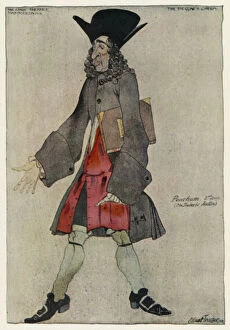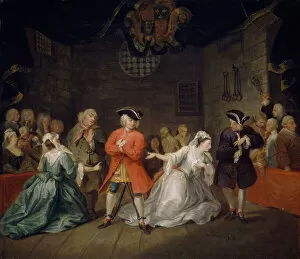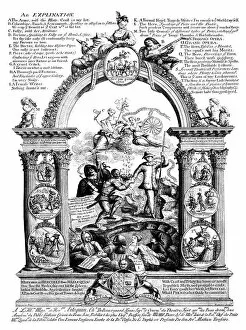The Beggars Opera Collection
"The Beggars Opera: A Colorful Tale of Love, Betrayal, and Redemption" Step into the world of "The Beggars Opera
All Professionally Made to Order for Quick Shipping
"The Beggars Opera: A Colorful Tale of Love, Betrayal, and Redemption" Step into the world of "The Beggars Opera, " a timeless masterpiece that has captivated audiences for centuries. With its vibrant characters and gripping storyline, this opera takes us on a journey through the gritty streets of 18th-century London. Meet Polly Peachum, portrayed in a stunning color lithograph. Her beauty is matched only by her innocence as she navigates the treacherous world around her. Alongside her is Captain Macheath, another striking figure brought to life in vivid detail. His charm and roguish nature make him both irresistible and dangerous. In a scene set at a tavern near Newgate prison, we witness the clash between love and loyalty. Lucy Lockit, depicted in yet another captivating lithograph, finds herself torn between her affection for Macheath and her duty to her father Peachum. The tension rises as these complex characters face their own moral dilemmas. Speaking of Peachum and Lockit, their presence looms large throughout the story. Their colorful lithographs capture their cunning personalities perfectly - Peachum with his calculating gaze and Lockit with an air of authority. But it's not just about individual characters; it's about the grand spectacle unfolding before our eyes. William Blake's Act III depiction from 1788/1790 immerses us in the dramatic climax where all secrets are revealed and fates hang in balance. As we delve deeper into this enchanting tale, we cannot forget William Hogarth's contributions to its visual legacy. His scenes from 1728/1729 transport us back to Gay's original production with every brushstroke telling a thousand stories. And finally, let us acknowledge an unknown artist who first brought "The Beggars Opera" to life visually in 1728 - forever etching its place in history as an enduring work of art. "The Beggars Opera" is not just an opera.

















